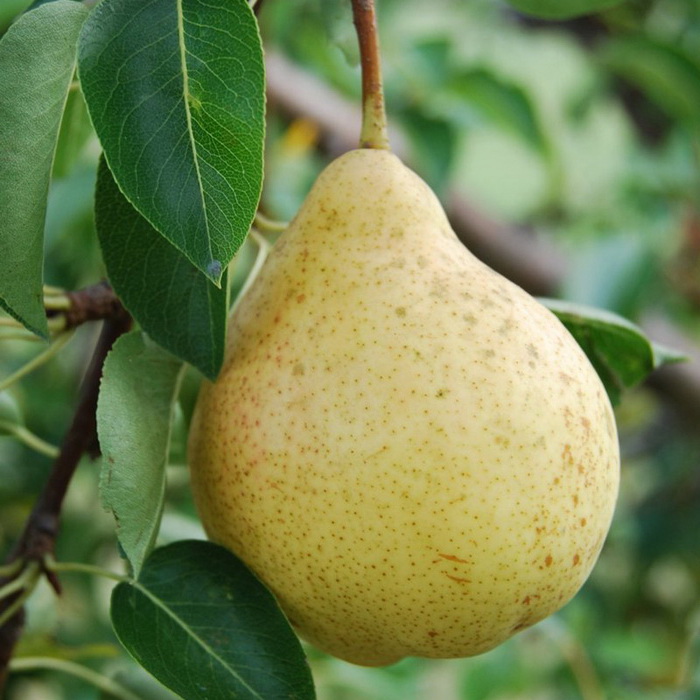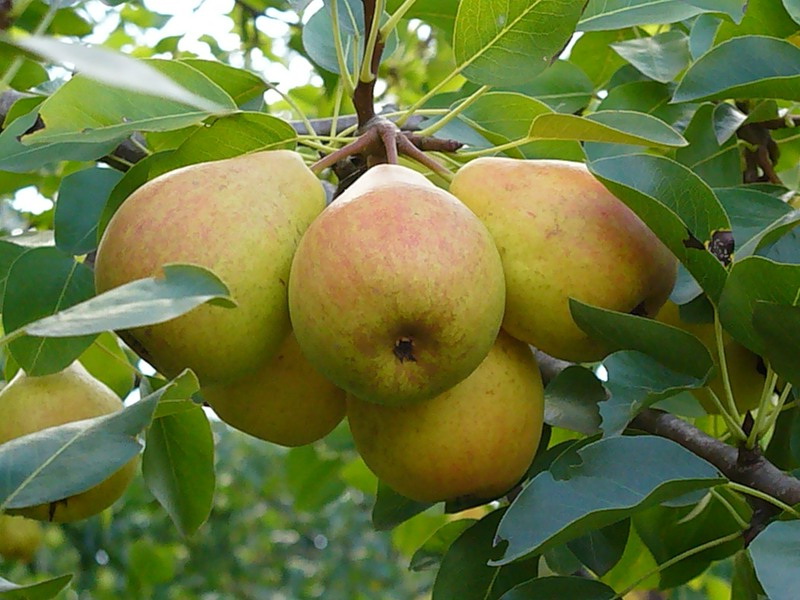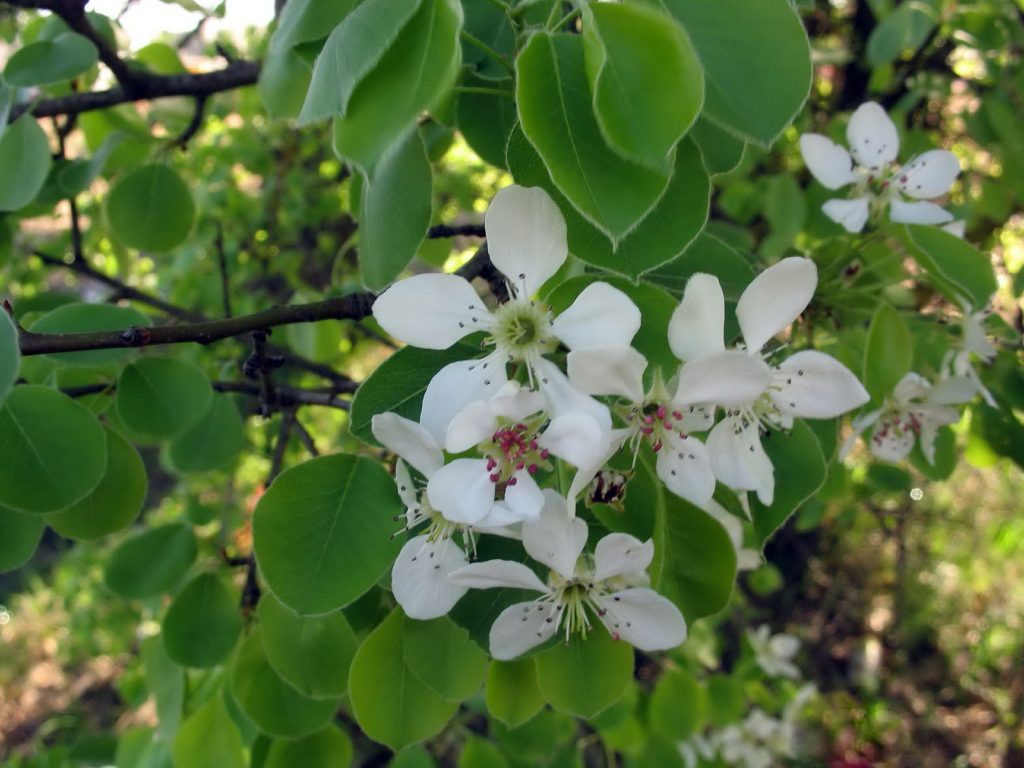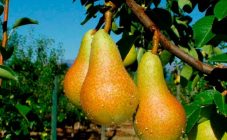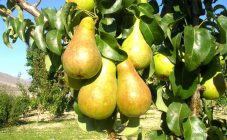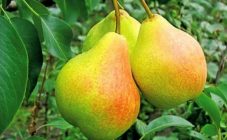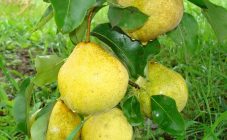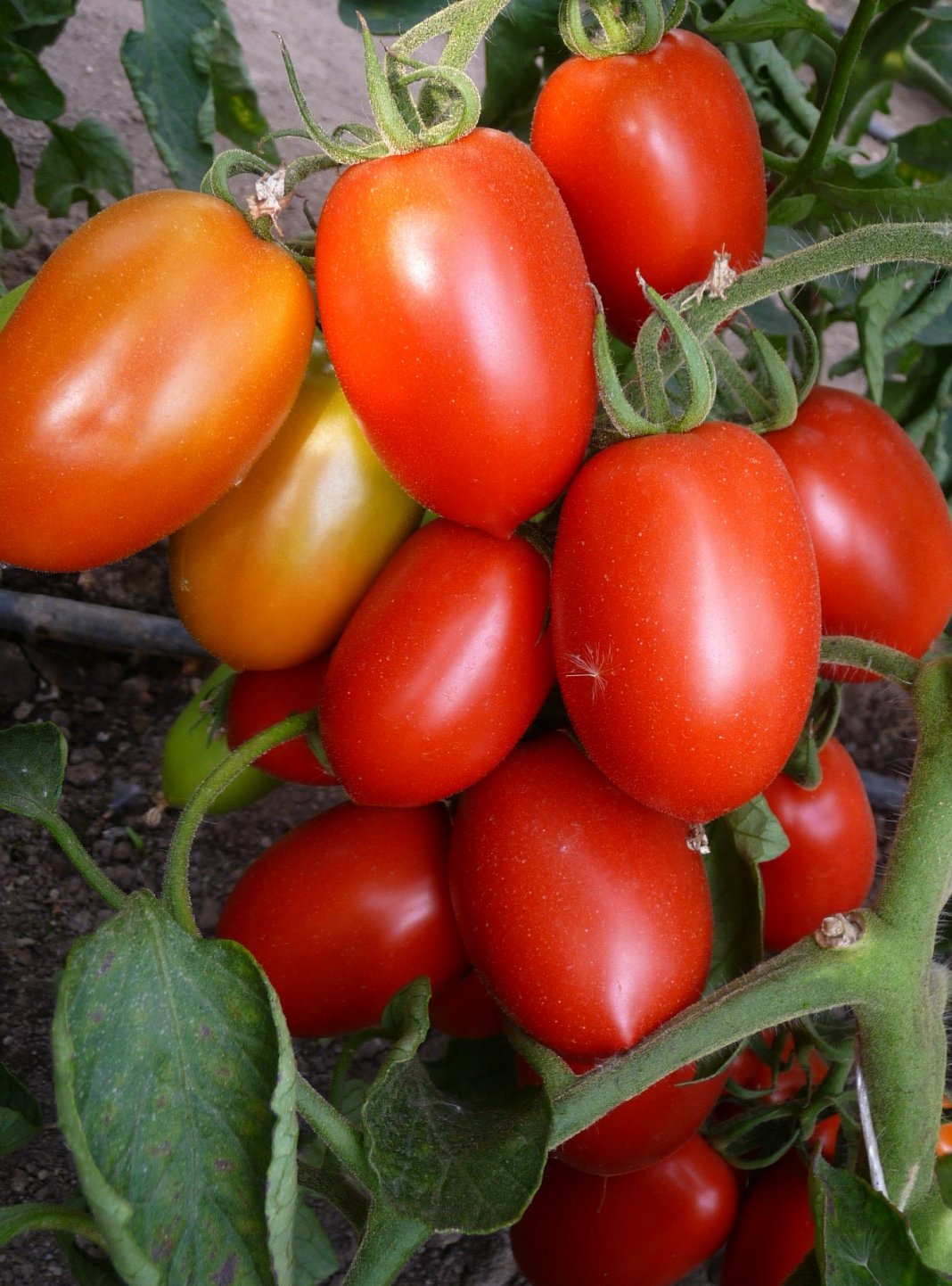Content:
The Elena pear variety is known for its aromatic and juicy fruits weighing more than 200 g. They have a rich sweet taste with a slight sourness and light astringency and an unsurpassed smell. You can use pears both for winter preparations, and eat fresh fruits or add them to summer salads.
Pear Elena variety description
Pear Elena from the category of fruit tree, considered early winter. The variety was bred in 1960 by the breeder P.G. Karatyan, crossing such varieties of varieties as Forest Beauty and Winter Bere. The tree itself grows short, has a compact pyramidal crown, average foliage. The fruits of this pear are large enough from 150 to 200 g, have a rounded shape and a greenish-yellow color. When fully ripe, the pear acquires a bright yellow color. The peduncle is short and thick, slightly curved.
The pulp of the fruit is dense, white, juicy with high taste. Full ripening begins in mid-September, so the harvest is usually harvested at the end of the first month of autumn. Pears have good keeping quality, the shelf life is about 4 months.
Features of the variety
One of the main advantages of this variety, in addition to its taste, is the resistance of the fruit tree to fungal diseases. Such common diseases as scab or septosporiosis practically do not affect.
After planting seedlings, the first harvest can be expected in 5-7 years. From now on, the tree will bloom and set fruit every year, regardless of weather conditions. The fruits grow medium to large in size, they taste sweet with a slight tart-sour aftertaste. On average, the yield of one tree reaches 40 kg.
Planting and growing
It is recommended to plant seedlings in spring or autumn. Autumn planting is carried out until the end of the first half of October, before the frost has begun. Spring - at the end of April, when the frost has already ended.
Before planting this type of pear, you should choose a favorable place in the garden for it. It should be sunny and not too hot at the same time. It must be borne in mind that excessively humid air has a detrimental effect on this plant. A suitable option is planting in the southern, southwestern or western part of the garden.
If planting takes place in the fall, the seedling hole should be prepared about 1 week before planting. This is done to avoid severe soil shrinkage some time after planting. The depth of the fossa is calculated based on the size of the roots of the seedling, on average it is 50 cm deep and about 1 m wide. A peg is driven into the central part of the pit to tie the trunk. Immediately before planting, it is recommended to loosen the bottom of the hole and make notches in its walls.This will improve breathability, which will have a positive effect on the growth of the pear as a whole.
Further care
For pears, irrigation is ideal when small drops of water fall on the entire tree. If this is not possible, you can dig a small ditch about 10 cm deep around the tree and pour water into it as needed. Watering is carried out 2-3 times in spring and autumn, and on hot summer days it should be increased up to several times a month, depending on weather conditions.
Top dressing affects high yield. Determine its need by the state of the tree itself. Characteristics of signs, what kind of feeding is needed:
- leaves are underdeveloped - lack of nitrogen;
- low frost resistance and poor aging - excess nitrogen;
- shoots fall from the bottom of the pear, buds are delayed - lack of phosphorus;
- leaves turn brown and dry quickly - lack of potassium;
- leaf spot and their gradual withering away - lack of calcium.
It is recommended to feed the pear from time to time so that the tree regularly receives a full portion of all the necessary minerals. Experienced gardeners also advise feeding in the autumn after harvest, as this will better prepare the tree for the winter period.
Advantages and disadvantages of the variety
The Elena pear variety has many positive qualities and few disadvantages, which makes it popular among gardeners. The main advantages of gardeners are that Elena's pear does not require pollinators - it is self-fertile (it can set fruits on its own and does not need a pollinator neighbor). Other advantages include the following characteristics of the variety:
- excellent taste;
- high frost resistance with good care;
- bountiful harvest;
- disease resistance;
- beautiful aesthetic appearance of the fetus;
- storage duration;
- winter ripening.
Disadvantage - the frost resistance of Elena pear depends on the quality of watering, especially in the hot period of summer. When a tree bears abundant fruit and at the same time it does not have enough moisture, with the onset of a severe frost in winter, its death is possible.
Elena varietal pear is a great option for those who want to enjoy delicious aromatic fruits in winter. With proper care, a fairly large crop can be harvested from one tree, and its resistance to diseases allows it to be cared for in a minimum of time compared to other varieties.
